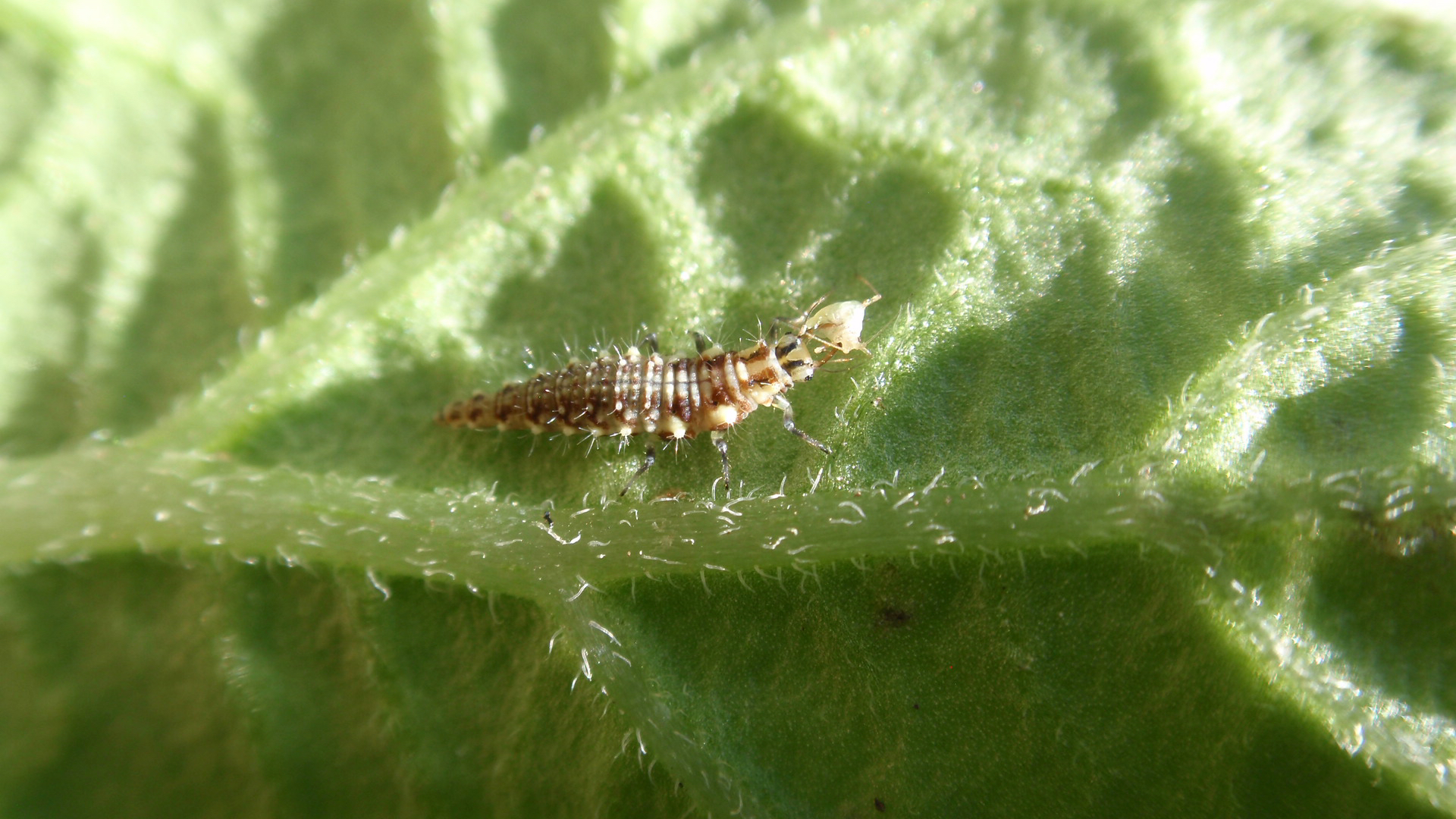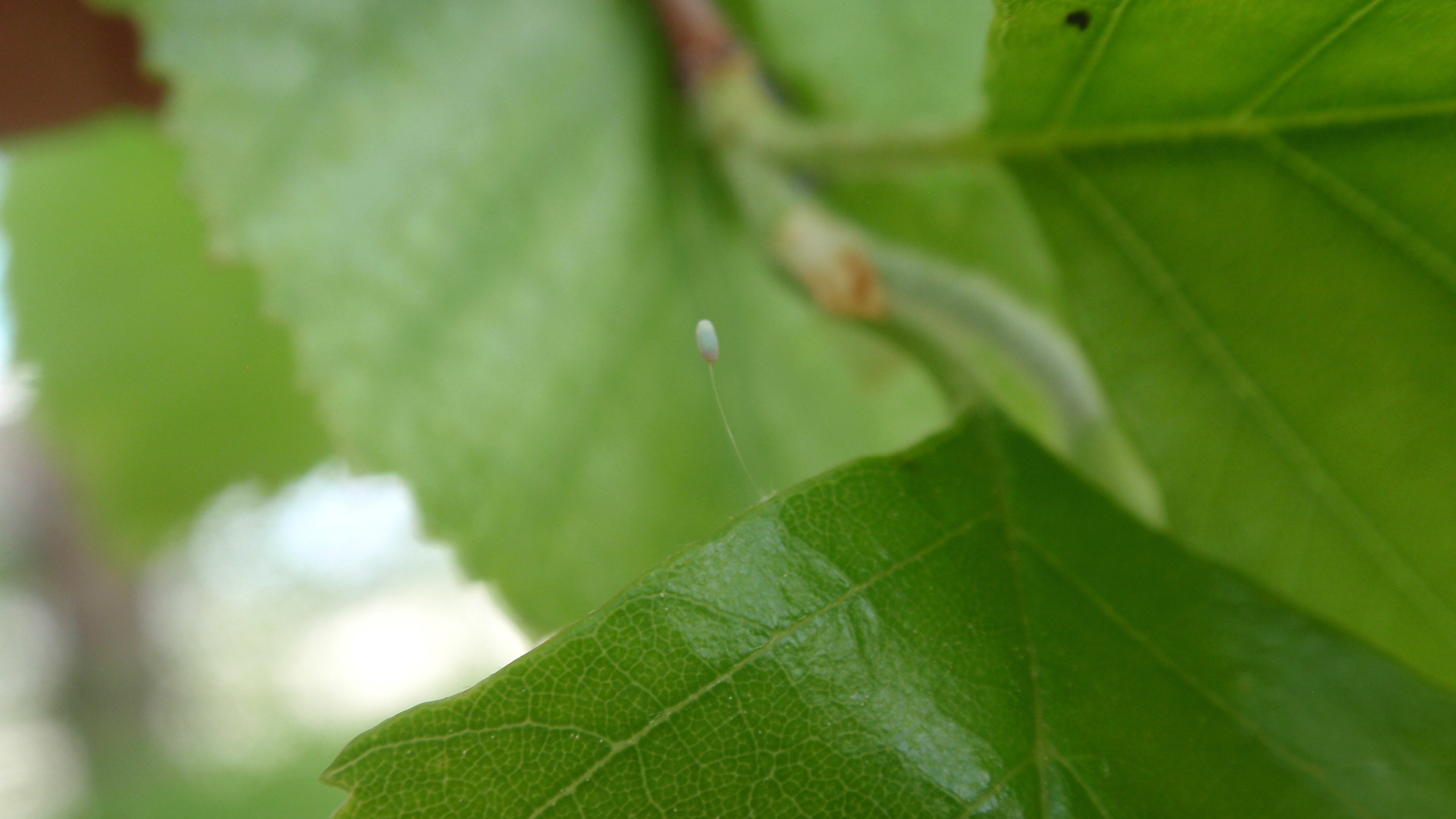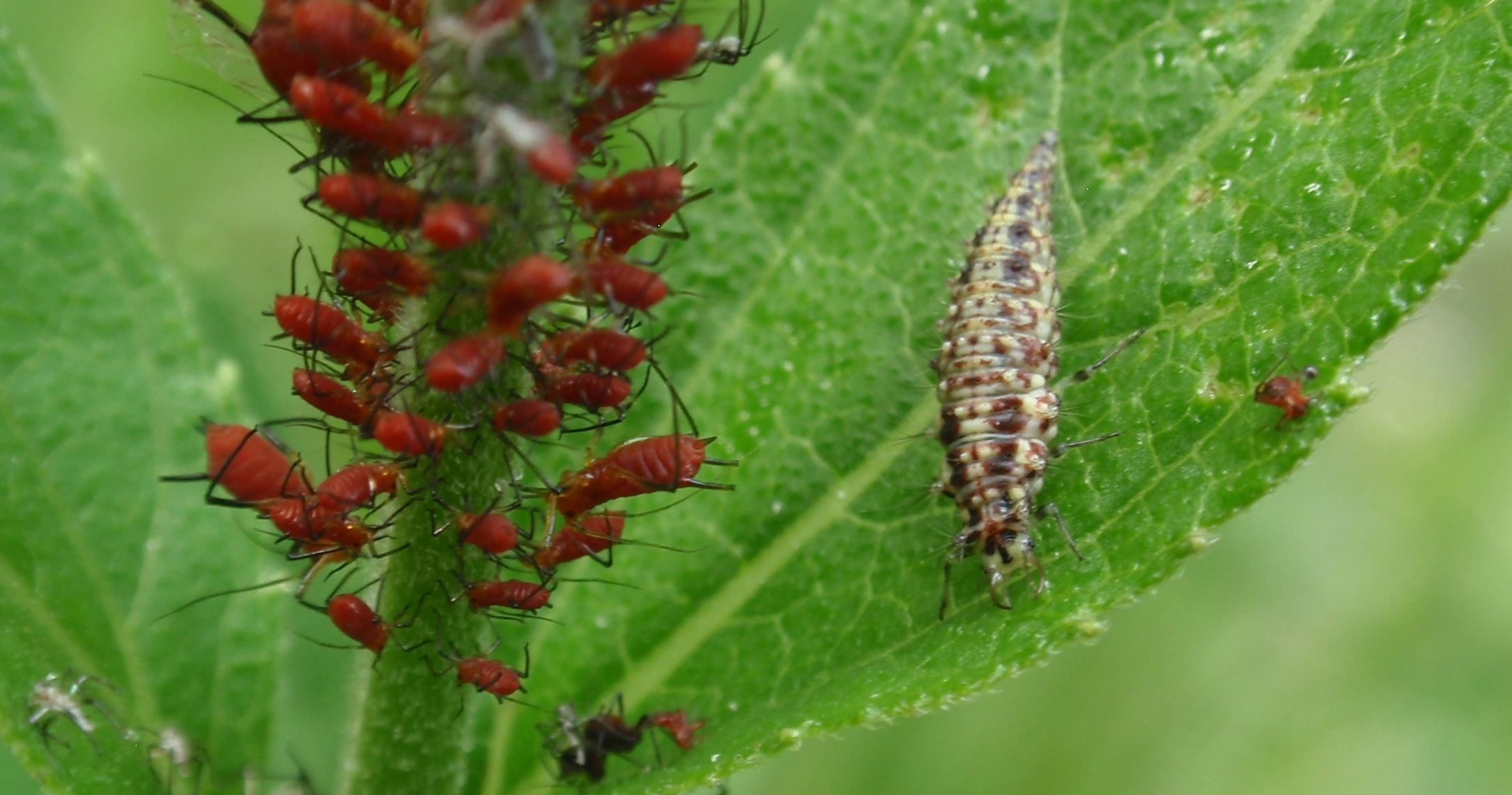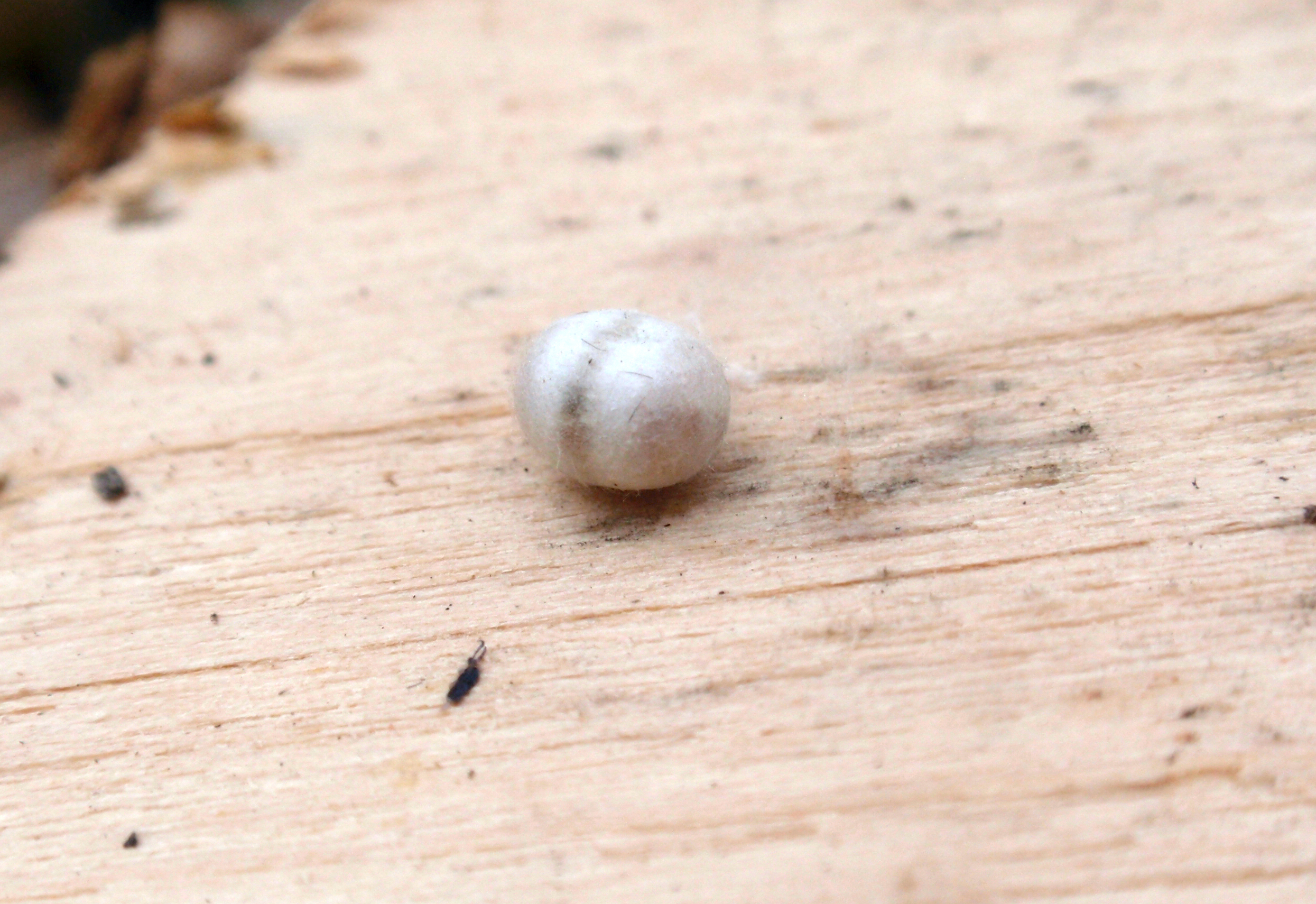Michigan insects in the garden – Season 2 Week 9: Chrysopidae
This insect garden helper has an ugly duckling story all its own.

The predatory insects in the family Chrysopidae also go by the name of green lacewings. This name was given to them due to their body color and the venation pattern in the wings of the adults (Photo 1). The immature stage, however, is considerably less attractive, with an alligator shaped body speckled in hairy warts and a pair of scimitar-shaped incisors (Photo 2). Fortunately, they are not self-conscious as they carry on the important business of ridding our gardens of insect pests.

From beast to beauty
Green lacewings start out their lives in an egg perched atop a strand of chitinous material secreted by the adult female (Photo 3). Presumably, the strand protects them from being found by other hungry insects who might be searching about for food. Lacewing eggs can be found in a variety of places, although they are commonly spotted on plant stems or foliage of plants that are infested with aphids. After hatching from the egg, the immature lacewing (larva) begins to immediately search for food. Aphids (Photo 2 and 4) and other soft-bodied insects are usually the food of choice, but they will attempt to eat anything that they can get their jaws into.

The jaws of lacewing larvae have a built-in groove that channels toxic saliva right into the victim’s body. The saliva also contains enzymes, which break down internal tissues into a nutrient-rich liquid that the larva can then slurp back out through the same channels that carried the saliva in. Left behind is the shriveled empty carcass of the victim (Photo 4).

Once they have reached maturity, lacewing larvae spin a silken cocoon (Photo 5) within which they will make the transition to adulthood (metamorphosis). After pupating in the cocoon, the adult lacewing will emerge and begin to search for food, a mate, and if she’s a female, a place to deposit eggs.
Adult green lacewings make a variety of dietary choices, depending on the species. Some don’t feed at all, others feed only on pollen from flowers, and others are predators on the same kinds of prey that their larvae choose. Once they have mated, female green lacewings seek out plants that are infested with aphids upon which to lay their eggs.

If you plant it, they will come
If you’re wondering how to bring more green lacewings into your yard or garden, the answer is relatively simple: grow flowering plants. Even though not all adult lacewings feed on pollen, research from Michigan State University and Michigan State University Extension has shown that patches of native wildflowers attract green lacewings. It is also a good idea to choose pest management practices that are less harmful to beneficial insects. This could mean choosing insecticides that only affect pest insects and/or not applying pesticides to flowering plants.
You can learn more about these and other Smart Gardening practices to conserve beneficial insects on the Gardening in Michigan website from MSU Extension.



 Print
Print Email
Email





